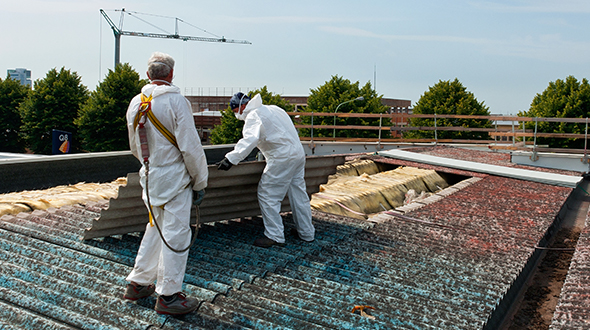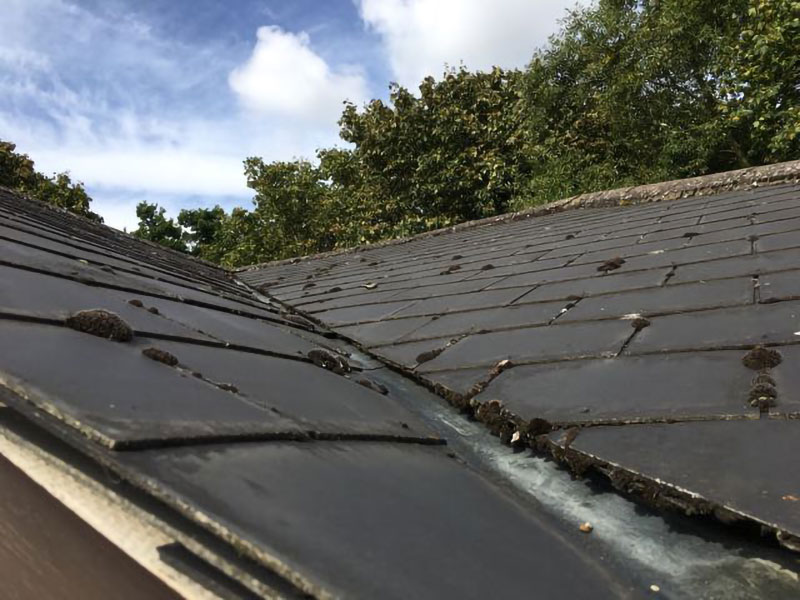Community Awareness About Asbestos Roof Dangers Video Guides For Safe Removal
Community Awareness About Asbestos Roof Dangers Video Guides For Safe Removal
Blog Article
Post Asbestos Roof Removal Cleaning Find A Licensed Asbestos Removalist

Asbestos is a naturally occurring mineral that has been widely used in development materials as a outcome of its fire-resistant properties and sturdiness. However, the health risks associated with asbestos exposure have turn out to be more and more clear over time, resulting in stringent regulations and guidelines for its removal, generally referred to as asbestos abatement guidelines. These guidelines aim to attenuate the danger of exposure to asbestos fibers during removal and demolition activities.
Understanding the importance of correct asbestos abatement procedures is essential for each staff and most people. When asbestos-containing materials are disturbed, microscopic fibers can turn into airborne, resulting in inhalation and potential serious health issues such as lung cancer and mesothelioma. This heightened awareness has prompted the development of comprehensive guidelines that must be adhered to by professionals concerned in asbestos abatement.
Prior to commencing any abatement project, it's important to conduct an intensive assessment of the positioning. This entails figuring out the presence of asbestos-containing materials, assessing their situation, and evaluating the potential risks. A certified inspector, often educated and certified, typically performs this assessment. This preliminary step ensures that each one necessary precautions may be taken in the course of the removal process.
Once the assessment is full, the following part includes growing an in depth abatement plan. This plan ought to outline the methods to be used, safety measures to be implemented, and waste disposal procedures. It must embody the particular work practices that might be adopted to make sure the security of both workers and occupants nearby. Communication with all stakeholders is paramount at this stage to make sure everybody understands the procedures and safety measures in place.
Professional Asbestos Roof Removal Solutions Removal & Replacement Of Roof Asbestos
Personal protective equipment (PPE) is a vital component of asbestos abatement guidelines. Workers involved within the removal process should wear appropriate gear, including respirators, disposable coveralls, gloves, and goggles. This PPE serves as a barrier between the employee and probably hazardous materials, reducing the risk of inhalation or pores and skin contact with asbestos fibers.
Containment is one other essential factor of safe asbestos abatement. The work area must be clearly delineated to forestall unauthorized entry. This often entails the utilization of plastic sheeting to seal off the area and forestall asbestos fibers from escaping. Negative air strain models may be utilized to guarantee that any airborne fibers are contained throughout the designated work website.
Wet methods are recommended for asbestos removal when possible. By dampening materials, the release of asbestos fibers into the air is considerably lowered. This practice points to the importance of guaranteeing that the environment remains moist in the course of the removal process. In addition, eradicating asbestos as whole sections or items, instead of breaking them aside, further minimizes the danger of releasing fibers.
After the removal process is full, thorough cleaning of the work space is important. This entails the usage of specialised vacuums equipped with HEPA filters to guarantee that any residual asbestos fibers are effectively captured. Additionally, all surfaces should be thoroughly wiped down, and air checks are often carried out to substantiate that no asbestos fibers remain within the environment.
Importance Of Documentation In Asbestos Projects Hazardous Materials & Disposal Services
Proper disposal procedures for asbestos waste are outlined within the guidelines to stop exposure to asbestos in landfills or different disposal sites. Asbestos-containing materials have to be double-bagged in leak-tight containers and transported in accordance with native regulations. Only designated disposal sites which may be geared up to deal with hazardous waste should receive asbestos materials.

Training and certification are also elementary parts of the rules. All personnel concerned in asbestos abatement should bear a rigorous training program focused on safe work practices, hazard recognition, and emergency response strategies. This training ensures that staff are competent in managing the inherent risks related to asbestos and may intervene successfully in case of an emergency.
Compliance with native, state, and federal regulations is not only a best practice but a legal requirement. Agencies such as the Environmental Protection Agency (EPA) and the Occupational Safety and Health Administration (OSHA) have established regulations governing asbestos abatement. These regulations present a framework for making certain that asbestos is managed safely and responsibly, defending both staff and the public.
In conclusion, adhering to asbestos abatement guidelines is important for guaranteeing the protection of everybody concerned in or affected by an abatement project. From the preliminary assessment and planning phases to the precise removal and proper disposal of asbestos-containing materials, every step have to be approached meticulously - Asbestos Removal Project Completion Protocols. Education and training are essential to cultivating a educated workforce able to implementing these guidelines effectively. As awareness of asbestos-related health risks continues to grow, compliance with these guidelines will contribute significantly to public health and safety. By following established protocols, we are ready to mitigate risks associated with asbestos exposure, safeguarding not simply staff, however the community as a whole
Resources For Asbestos Roof Liability Coverage Testing, Removal & Disposal Of Asbestos
- Ensure proper identification and assessment of asbestos-containing materials (ACM) previous to starting any abatement work to find out the extent and type of materials current.
- Utilize skilled and authorized professionals for the removal process to minimize health risks and ensure compliance with regulatory requirements.
- Establish a containment area across the worksite using plastic sheeting and limitations to stop the unfold of asbestos fibers during abatement activities.
- Implement unfavorable air pressure methods to filter airborne particles and preserve air quality throughout the containment area all through the removal process.
- Conduct thorough inspections and air monitoring earlier than, during, and after abatement to confirm that asbestos levels are within safe limits.
- Use acceptable personal protective equipment (PPE) for workers, including respirators, disposable coveralls, and gloves, to guard in opposition to exposure.
- Follow proper waste disposal protocols for ACM, ensuring it is securely sealed and transported to designated hazardous waste services.
- Maintain detailed information of the abatement process, including inspection reports, monitoring results, and disposal certifications, for regulatory compliance.
- Provide clear communication with occupants and related stakeholders in regards to the abatement process, potential risks, and safety measures being implemented.
- Stay updated with native, state, and federal regulations relating to asbestos management and abatement to ensure compliance and safety all through the project.undefinedWhat are the main asbestos abatement guidelines I must be aware of?
The main guidelines embrace following federal and state regulations, conducting an assessment to identify asbestos presence, having a trained and certified contractor perform the abatement, and ensuring proper cleanup and disposal of asbestos waste in accordance with local environmental legal guidelines.

How can I inform if my home incorporates asbestos?
Asbestos may be present in materials such as insulation, flooring tiles, and roofing. If your house was constructed before the Eighties, it’s advisable to have knowledgeable inspection, as testing involves taking samples from suspected materials and sending them to a lab for analysis.
Environmental Impact Of Asbestos Roof Removal Video Guides For Safe Removal
What steps should I take if I find asbestos in my home?
If asbestos is found, it's essential not to disturb it. You ought to contact a licensed asbestos abatement contractor to evaluate the state of affairs. They will consider whether or not to contain, take away, or monitor the asbestos, relying on its condition and site.
Are owners allowed to perform their own asbestos abatement?
Generally, it isn't really helpful for householders to deal with asbestos abatement on their own because of health risks and legal implications. Abatement should be carried out by licensed professionals who are trained in safe handling and disposal methods to guard themselves and residents.
Evaluating Contractors For Asbestos Roof Services How To Get Your Roof Replaced For Under 1000
What is the importance of air monitoring throughout asbestos abatement?
Air monitoring is crucial to make sure that asbestos fibers are not released into the environment in the course of the abatement process. It entails sampling air before, during, and after the work to verify that asbestos ranges are beneath acceptable limits, thus defending workers and occupants.
How do I choose a professional asbestos abatement contractor?
Aftercare Following Asbestos Roof Removal Removal Of Asbestos Roof In Area
Look for contractors who're licensed, licensed, and have expertise in asbestos removal. Check their references, learn evaluations, and confirm their credentials. It’s necessary that they comply with local regulations and OSHA guidelines for wonderful safety practices.
What should I count on during the asbestos abatement process?
During the process, the work area will be sealed off, and containment measures will be implemented. The contractor will use specialized equipment to safely remove the asbestos material, followed by thorough cleaning and disposal of all waste to ensure the area is safe for re-occupancy.
Local Regulations For Asbestos Handling Risks Associated With Asbestos Roofs
What are the risks of not following asbestos abatement guidelines? Asbestos Roof Removal Licenses And Accreditation.
Failing to stick to guidelines can expose residents and employees to dangerous asbestos fibers, resulting in critical health points similar to mesothelioma and lung cancer. Legal consequences may also arise, including fines and potential litigation from violations of safety regulations.
Factors Influencing Asbestos Roof Removal Costs Commercial Roofing Contractor For Removal
How often should I actually have my property inspected for asbestos?
For older homes or properties that may undergo renovations, regular inspections each few years are advisable. Additionally, if any renovations or disturbances happen, an inspection must be performed to make sure no hidden asbestos is present that could pose health risks.
great post to read original site Report this page